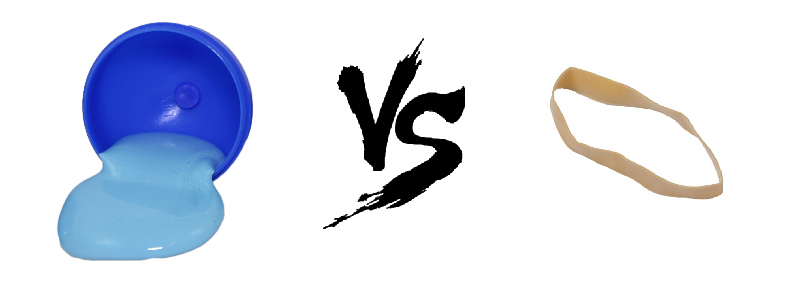Elongated Man: Silly Putty Vs. Rubber Band
Warning: This blog post contains spoilers from Season 4, Episode 4 of DC Comics/The CW’s The Flash.
“Elongated Journey Into Night” introduces Ralph Dibny, a former cop turned private investigator, recently endowed with superhuman stretching abilities by a dark matter bus accident. Dibny doesn’t know how to control his newly acquired powers and can’t shrink his limbs back to normal after being stretched off a six story building. Team Flash takes Dibny to S.T.A.R. Labs for diagnosis and treatment.
Dr. Harry Wells: The dark matter has polymerized Dibny’s cells.
Dr. Caitlin Snow: You’re saying the walls of every cell in his body have elasticized?
Harry: I’m saying that they’ve formed an unbreakable bond on the atomic level and they stretch these cells and stretch these cells…Like Silly Putty!
CPG scientists, choosing not to take artistic license into account, provide a scientific rebuttal, and anxiously await notification of a writer’s credit from The CW.
CPG’s Response
From a molecular structure point of view, Silly Putty is an incorrect analogy, since the crosslinking bonds formed in Silly Putty are transient boron-linkages that readily de-form and reform under extensional deformation, and are hence breakable.
Silly Putty is best described as visco-elastic, having both viscous and elastic properties. If Dibny were truly like Silly Putty, he would eventually settle into a shallow, liquid-like pool due to the viscous behavior of Silly Putty.
A better analogy for Dibny would be a rubber band, which has covalent bonds which are more permanent, and hence ‘unbreakable’. Rubber bands are primarily elastic, meaning they can stretch but then retain their normal shape once the stress is removed.
More troublesome in this clinical description of Dibny is the idea that his cells have undergone polymerization, which presumably means that each cell has become covalently bonded to another cell. Would this be the case, Dibny would effectively have become a crosslinked system, which would resist, rather than encourage, elastic deformation.
Dibny’s Treatment: Crosslinking or Depolymerization?
In an attempt to return Dibny’s overextended extremities to regular sizes, Snow synthesizes a crosslinking serum:
Caitlin: Drink this…It’s a serum of sulfur, zinc oxide and steric acid to crosslink your polymerized cells.
Dibny: You did it! I’m cured!!!
Caitlin: Well, not cured. All I did was introduce a stabilizing enzyme to reset your body to default shape through vulcanization.
CPG’s Response
Interestingly, none of the serum components described by Caitlin are an enzyme. Stearic acid is a wax-like compound derived from animal and vegetable fats, and would play no role in crosslinking. Zinc oxide would also play no role in crosslinking, but would help Dibny avoid sunburn.
However, the sulfur mentioned is used in vulcanization of rubber, which crosslinks the rubber so that it can be used in tires, so it is sort of in line with Caitlin’s crosslinking statement. However, high temperatures are required for vulcanization (normally in excess of 150°C), so Dibny would have other issues beyond an unusual level of cellular stretchiness.
From the diagnosis above, however, Dibny’s problems are not due to the need for more crosslinking, but rather less crosslinking. So Dibny really needs a depolymerization process. For this, we would recommend either a peroxide-based catalyst, an unhealthy dose of ultraviolet light, a good amount of heat, or lots of mechanical deformation, all of which could cause depolymerization.

